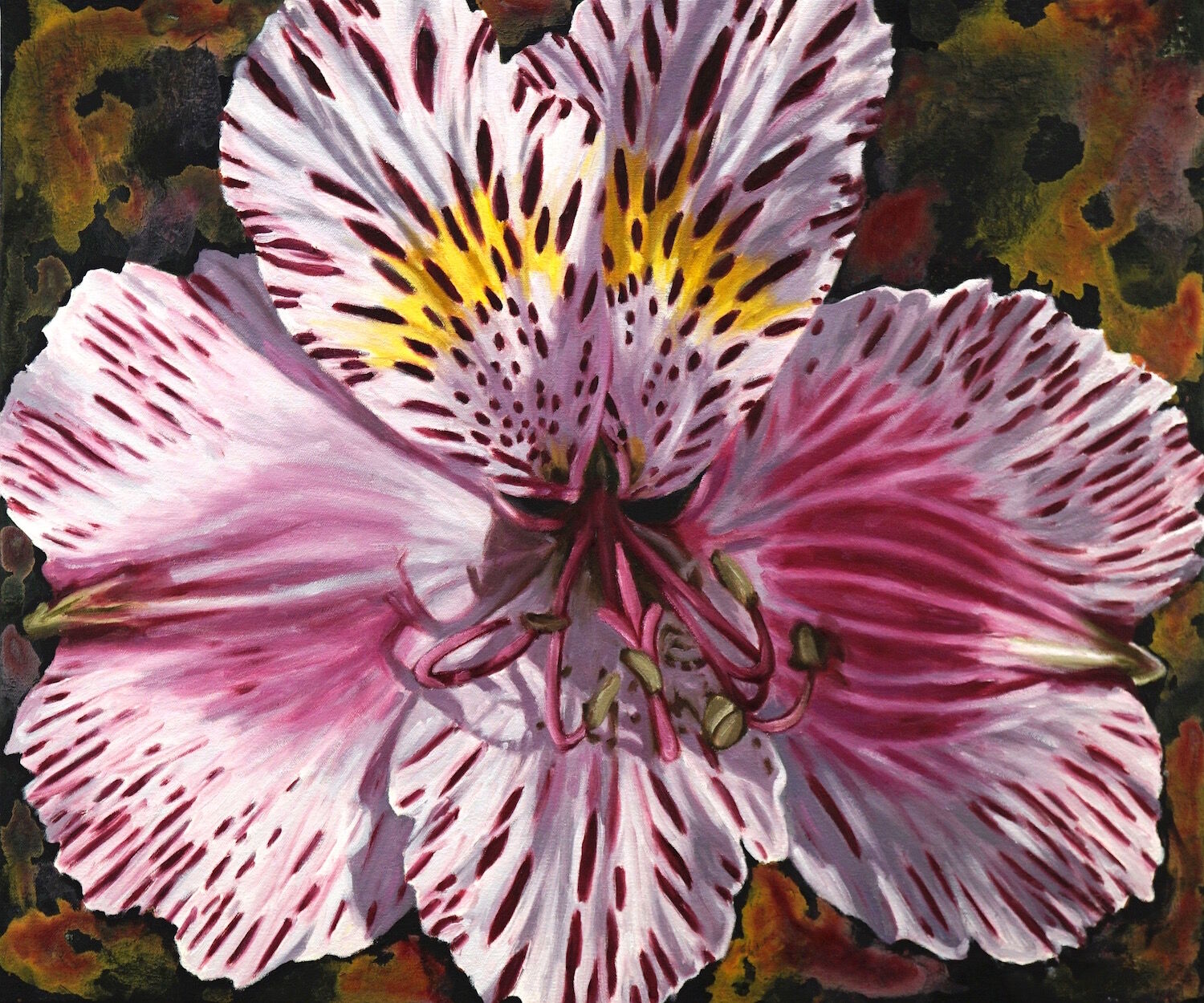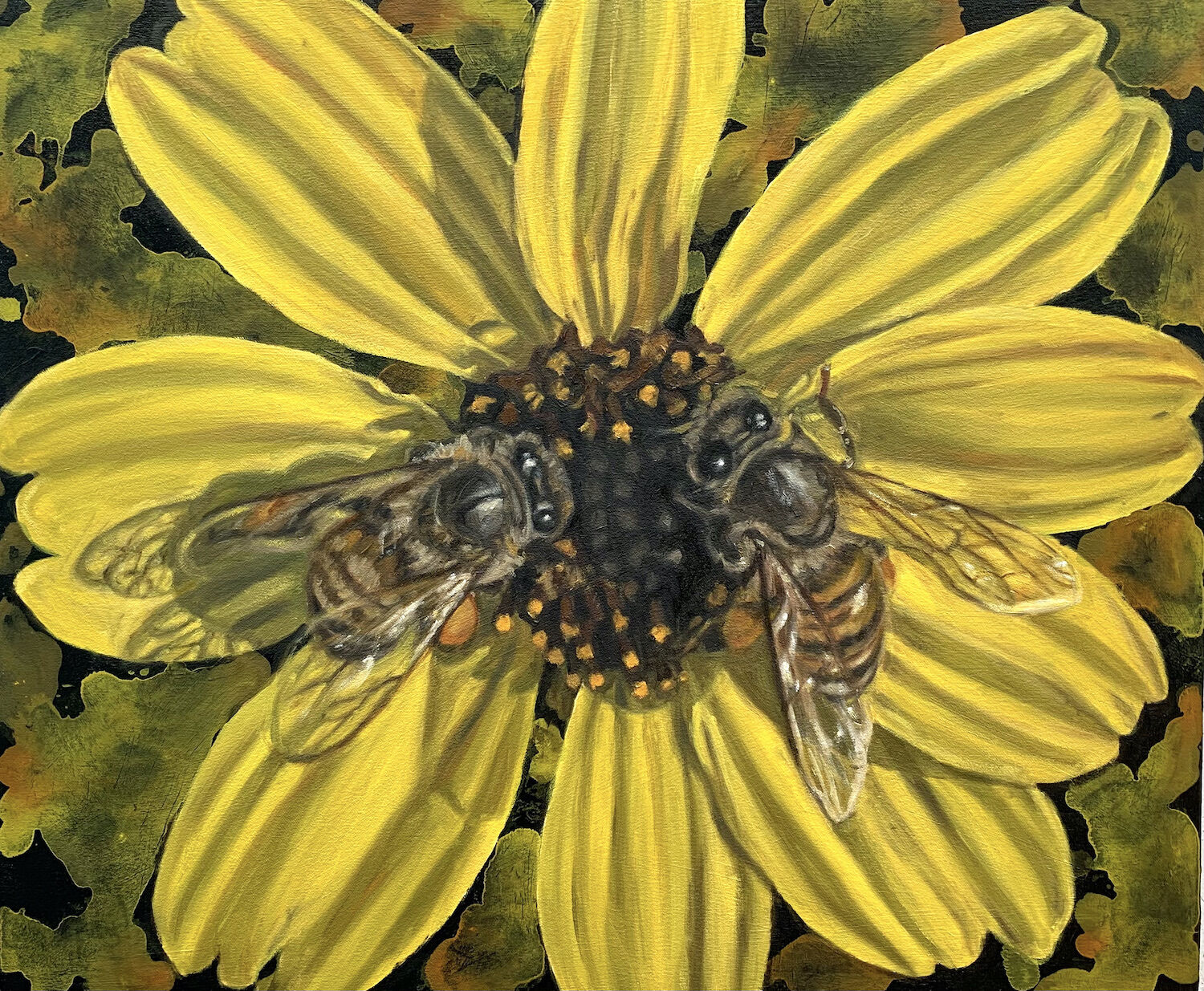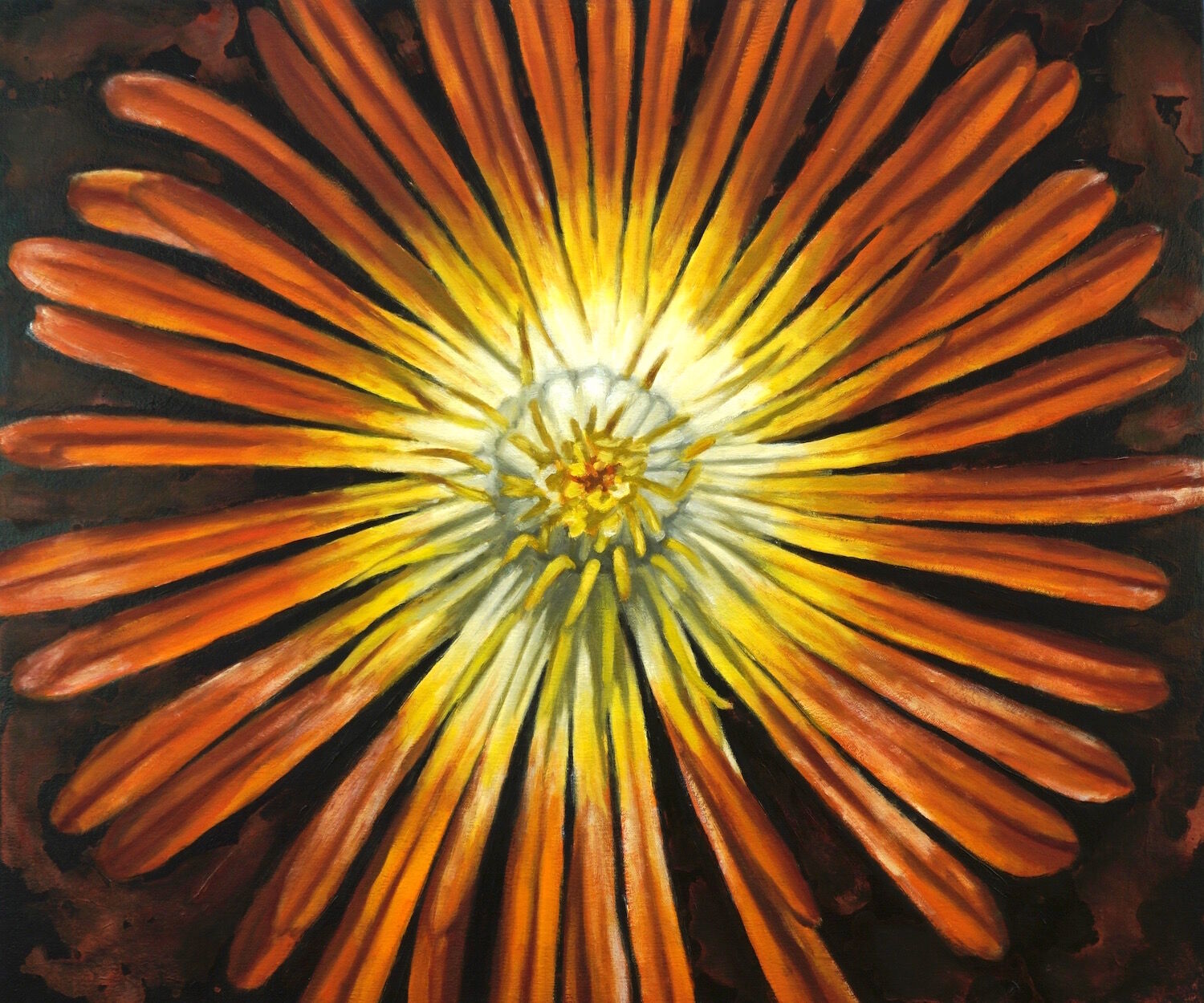
Amy Corton
Gail Roberts had no idea what she was in for when she decided to paint everything that blooms in the sprawling garden outside her home studio in La Mesa. Not just the decorative flowers planted for their showy good looks, but the fruit trees, vegetables, succulents, and weeds.
“It was a daunting task,” says Roberts. “I still have two tables of photographs I want to paint.” Even so, Gail Roberts: Color Fields, showing now at Oceanside Museum of Art through November 27, makes a dazzling collection. Set in a precise grid pattern, the 130 equally scaled oil paintings are arranged by color in spectrum order. The show’s name is a playful nod to the mid-century color field style of abstract painting (Mark Rothko, Helen Frankenthaler) and to the meticulous rows of cultivated color at places like the Carlsbad Flower Fields.

Lynda Forsha
“My work has always been about my immediate environment,” says Roberts, who’s spent the last 15 years tilling granite-laden soil and planting her garden across a half-acre of fertile land. “I come to have a deep understanding because I stay focused on what’s close to me.”
Roberts’ creative process starts with a high-powered macro camera lens, revealing details not noticeable to the naked eye. “Some of the flowers are as tiny as a pinhead and others are ten inches across,” she says. “It’s so surprising when you look at some of those tiny flowers and they have as much complexity of pattern and design as magnificent cactus flowers or lilies or roses—any of those flowers that are more recognizable.”
Take the humble California buckwheat, a native plant that produces a cluster of tiny white flowers popular with pollinators. “Every little flower is complex and unique,” says Roberts. “And it has this little knot where the stamen and pistil come together—you just can’t see that.”

Mountain Dew Ice
Even the most minute details are magnified in saturated color. Stretched to the edges of canvases, every bloom gets its day in the sun. Roberts, who learned all about her plants as she went along (their origins, their early uses, their migration patterns, etc.) says it’s difficult to pick out the pesky weeds from the prize winners.
PARTNER CONTENT
“Nature is remarkable,” she says. “As humans, we couldn’t possibly come up with the sense of invention and design that you’ll find in nature. We give ourselves way too much credit. We’re influenced as artists, at least I am, by the variety and incredible way in which these shapes and colors come together. I feel like I learned so much more.”












